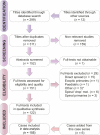Metastatic meningioma: a case series and systematic review
- PMID: 37491650
- PMCID: PMC10542723
- DOI: 10.1007/s00701-023-05687-3
Metastatic meningioma: a case series and systematic review
Abstract
Background: Meningiomas are the most common primary intracranial tumor. While the majority of meningiomas are benign, rarely they can metastasize extracranially. There is a need for a more comprehensive review of these patients to improve our understanding of this rare phenomenon and its prevalence globally. Here we describe our institution's experience of patients presenting with metastatic meningiomas. We further perform a systematic review of the existing literature to explore common features of this rare manifestation of meningioma and review the efficacy of current treatments.
Methods: We performed a retrospective clinical review of all adult patients with metastatic meningioma managed at our institution over the past 20 years, identifying 6 patients. We then performed a systematic review of cases of metastatic meningioma in the literature ranging from the years 1886 to 2022. A descriptive analysis was then conducted on the available data from 1979 onward, focusing on the grade and location of the primary tumor as well as the latency period to, and location of, the metastasis.
Results: In total, we analyzed 155 cases. Fifty-four percent of patients initially presented with a primary meningioma located in the convexity. The most common site of metastasis was the lung. Risk factors associated with a shorter time to metastasis were male sex and a high initial grade of the tumor. Regarding treatment, the addition of chemotherapy was the most common adjunct to the standard management of surgery and radiotherapy. Despite an exhaustive review we were unable to identify effective treatments. The majority of published cases came from centers situated in high-income countries (84%) while only 16% came from lower- and middle-income countries.
Conclusions: Metastatic meningiomas pose a pertinent, and likely underestimated, clinical challenge within modern neurosurgery. To optimize management, timely identification of these patients is important. More research is needed to explore the mechanisms underlying these tumors to better guide the development of effective screening and management protocols. However, screening of each meningioma patient is not feasible, and at the heart of this challenge is the inability to control the primary disease. Ultimately, a consensus is needed as to how to correctly screen for and manage these patients; genomic and epigenomic approaches could hold the answer to finding druggable targets.
Keywords: (Epi)genomics; Meningioma; Metastatic; Oncology; Palliative; Recurrent; Screening.
© 2023. The Author(s).
Conflict of interest statement
The authors declare co competing interests.
Figures




References
-
- Chew SJY, Rajesvaran C, Woo X, Goh CH. Atypical meningioma with nodal metastasis: a case report. Malays J Pathol. 2021;43(3):453–456. - PubMed
Publication types
MeSH terms
LinkOut - more resources
Full Text Sources
Medical
Miscellaneous

